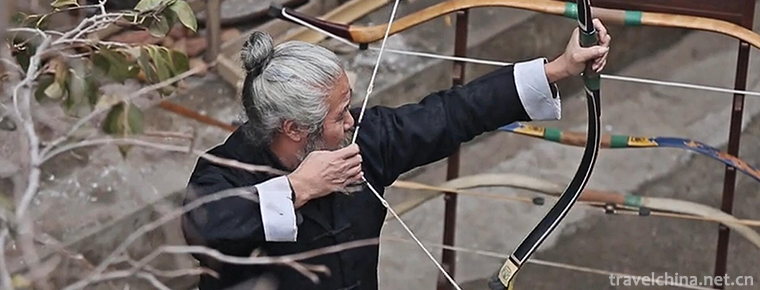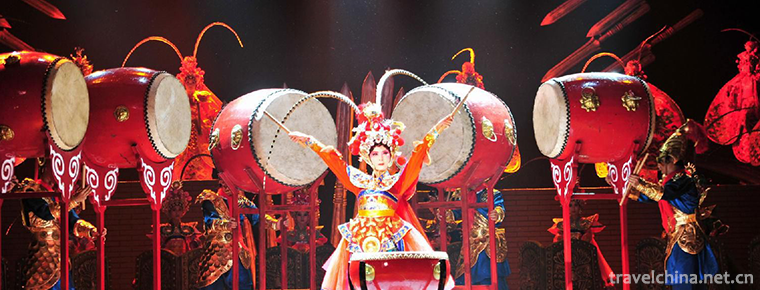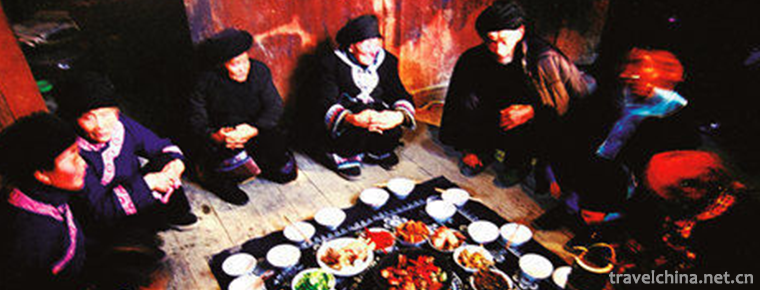Forging Technology of Nanjing Gold Foil
Forging Technology of Nanjing Gold Foil
Nanjing gold foil forging technology, local traditional handicraft in Nanjing, Jiangsu Province, is one of the national intangible cultural heritage.
The gold foil process in Nanjing, Jiangsu Province, started in the Eastern Jin Dynasty and has a history of more than 1600 years. The production of gold and silver foil was recorded in the documents of the Southern Dynasty at that time. During the Yuan Dynasty, gold foil began to be produced in large quantities, and further developed in the Ming and Qing Dynasties. After the founding of New China, Nanjing gold foil has developed rapidly and sold to all countries in the world.
On May 20, 2006, Nanjing gold foil forging technology was approved by the State Council of the People's Republic of China and listed in the first batch of national intangible cultural heritage list, project number: _-36.
historical origin
As early as the Eastern Wu Dynasty or the Eastern Jin Dynasty, the development of religion gave birth to Nanjing gold foil, which was widely used in Buddha statues, God statues and construction industry. Nanjing was the earliest gold foil in the area around Maxiang, but they are all Longtan people, there are Liu, Ge, Yin three surnames of the family to make gold foil.
In the Qing Dynasty, gold foil handicraft industry was in its prime, and gold foil was not only sold in China. However, after 1840, China fell into the crisis of the state and the nation, the war continued, and China's gold foil industry also suffered heavy losses. Before liberation, the production of gold foil fell to the lowest level due to the dark rule of the Kuomintang reactionaries.
In the early days of the founding of the People's Republic of China, the sales channels of gold foil and gold thread in Nanjing were restored successively to the northeast, northwest and Beijing.
During the Cultural Revolution, Nanjing gold foil enterprises were mainly located in Longtan and a few in Jiangning. At that time, the production process and quality of gold foil were very backward. Many enterprises turned to the production of gold powder, and the production of gold foil products stopped. Later, as China's national economy was on the verge of collapse, the export of light industrial products was paid more attention, and the production of gold foil and wire was paid more attention. In 1976, the Jinxian Gold Foil Factory of Jiangning County also took gold foil to go abroad for the first time and paid gold to the then Kremlin Palace of the Soviet Union, which won international recognition.
Technological characteristics
Nanjing gold foil forging technology is unique, high technical requirements, maintaining the traditional smelting, beating and other skills, from ancient to modern, has been for manual hammering, is a special traditional process in China. Nanjing gold foil is pure in color, uniform in thickness and durable. Its forging technology completely preserves the traditional technology of gold foil production in China for thousands of years.
The hammering of gold foil is exquisite. Two craftsmen are required to sit in pairs to open the process. The upper palm hammer, handles turning paper, shifting and other technical essentials, requires "folding, pushing, eating, feeding in". The technical standard of "lifting the hammer to wipe the ears, dropping the hammer to wipe the chest, up and down the line, and opening the nose beam of the hammer is to strike evenly and show crab shell shape". Nanjing gold foil hammered out has the characteristics of pure color, uniform thickness, thin like cicada wings, soft like silk and satin. Nanjing gold foil will never change color, and its collection is still brilliant for hundreds of years.
Modern gold foil artists combine ancient traditional crafts with modern science and technology to make traditional gold foil forging more brilliant. Using scientific methods to produce the most critical foil for hammering gold foil, the quality is more stable.
Inheritance and Protection
Inheritance Significance
Nanjing gold foil has a wide range of uses, traditional gold-pasting technology is mainly used to decorate palaces, temples and their furnishings, decorative objects; the Forbidden City, the White House, Versailles Palace, Buckingham Palace, Kremlin Palace, Tibet Potala Palace, Henan Shaolin Temple, Moscow China Hotel, Thai Palace, Osaka Archway Building, President Zaire's residence are all produced in Nanjing. Gold foil.
Nanjing gold foil has been widely developed and utilized in many fields such as food, cosmetics, architecture, technology and decoration. There are still a lot of technological processes in gold foil production that can not be replaced by machines. It is these ancient intangible cultural heritages that ensure the quality and price advantages of Nanjing gold foil when participating in international competition.
China's export of real gold foil is well-known in the world, and has been exported to Italy, the United States, Germany, Japan, Turkey, Egypt, Southeast Asia and more than 40 countries and regions. With the development of modern production technology, the gold foil production part has embarked on the track of industrialization, and broadened the new uses of gold foil.
Current situation of inheritance
Nanjing gold foil forging technology has been mostly replaced by machine assembly line, but the twisting, production and other processes can only be completed by hand. However, because of the high skilled and labor-intensive work, young people are reluctant to engage in this industry. There are few successors in Nanjing gold foil industry. The market of gold foil derivatives in the market is shrinking day by day. In addition, the appearance of foil-beating machines has an impact on some traditional processes. Nanjing gold foil forging technology is facing the risk of loss of transmission.
Heritage figures
Wang Bisheng, male, was born in October 1951. On May 26, 2009, Wang Bisheng was selected as the representative successor of the third batch of national intangible cultural heritage projects, which was declared by Nanjing, Jiangsu Province. Project Name: Nanjing Gold Foil Forging Technology.
protective measures
In 2000, in order to further publicize the gold foil culture, Nanjing Gold Foil Group Co., Ltd. established the China Gold Foil Memorial Hall to show the traditional process and history of gold foil. By 2009, Nanjing Golden Foil Group Co., Ltd. had held three consecutive "Golden Foil Culture Festivals" to promote the culture of gold foil, in order to arouse the whole society's concern, attention and protection awareness of the traditional technology of gold foil.
In 2006, Nanjing Gold Line Gold Foil General Factory established Nanjing Gold Foil Forging Technology Training Base in China.
On March 6, 2017, Nanjing Gold Foil Museum of China opened in Longtan, Nanjing, which is the first comprehensive gold foil Museum in the world.
social influence
Important Exhibitions
From February 9 to 23, 2009, China's intangible cultural heritage traditional arts exhibition series was held in Beijing, and Nanjing gold foil forging technology was exhibited.
On October 18, 2014, the first cultural temple fair of "Symbol Jiangsu" co-sponsored by the Jiangsu Provincial People's Government and the British Government of Essex opened in Essex, England, and Nanjing Gold Foil was exhibited.


Forging Technology of Nanjing Gold Foil
-
Duck blood soup with vermicelli
Duck blood vermicelli soup is a famous specialty in Nanjing, belonging to Jinling food...
Views: 254 Time 2018-10-26 -
Xiangshui lake the Great Wall
Xiangshui Lake is another unique and beautiful tourist attraction in the suburbs of Beijing. Located in the west of the Great Wall of Huairou Mutianyu
Views: 475 Time 2018-12-10 -
Longtan Valley Ecological Scenic Spot in Xixia
Longtanggou Natural Ecological Scenic Area is located in Shuanglong Town Huashan Village, Xixia County, the hinterland of Funiu Mountains, Henan Province. It is 30 kilometers away from Xixia County
Views: 243 Time 2019-02-25 -
Engraving Printing Skills
Engraving printing technology, Yangzhou City, Jiangsu Province, local traditional handicraft, one of the national intangible cultural heritage.
Views: 411 Time 2019-04-27 -
Bow and Arrow Making Skills
Juyuan bow and arrow making technology, the traditional handicraft of Chaoyang District, Beijing, is one of the national intangible cultural heritage.
Views: 232 Time 2019-05-01 -
Weaving and Dyeing Techniques of Felt and Printed Fabric
Uygur felt, printing and dyeing technology, Xinjiang Uygur Autonomous Region Turpan (now Turpan) local traditional skills, one of the national intangible cultural heritage.
Views: 126 Time 2019-05-04 -
Bangkok in Puzhou
Bangzi of Puzhou is named for its origin in ancient Puzhou. Jinzhong and Northern Shanxi are called "Bangzi on the South Road" or "Bangzi Opera on the South Road", Shangdang is cal
Views: 135 Time 2019-06-09 -
Tujia Year
Tujia Year is an important and ancient festival of Tujia people in Xiangxi Tujia and Miao Autonomous Prefecture of Hunan Province. During the thousands of years of historical development, some relativ
Views: 210 Time 2019-06-23 -
Anhui Agricultural University
Anhui Agriculture University is located in Hefei, capital of Anhui province. Center Urban area Key universities in Anhui By Ministry of agriculture and rural People's Republic of China State Forestry
Views: 233 Time 2019-10-10 -
Mahu scenic spot
Mahu scenic area, located in Leibo County, Liangshan Yi Autonomous Prefecture, Sichuan Province, covers an area of 100 square kilometers. The scenic spot is composed of Mahu lake, Jinshajiang Valley and primitive dense forest.
Views: 206 Time 2020-10-16 -
Chinese Qiang Museum
Qiang museum is a local ethnic Museum, located in the south of Qiangxing street in Maoxian county. It was officially opened in 1988 when the Qiang traditional festival "Qiang calendar year". It is the only Qiang Museum in China.
Views: 115 Time 2020-11-06 -
Diexi earthquake site
Diexi earthquake site is located 2.5 km southeast of Jiaochang Township, Maoxian County, on the second grade platform on the East Bank of Minjiang River
Views: 367 Time 2020-11-07









